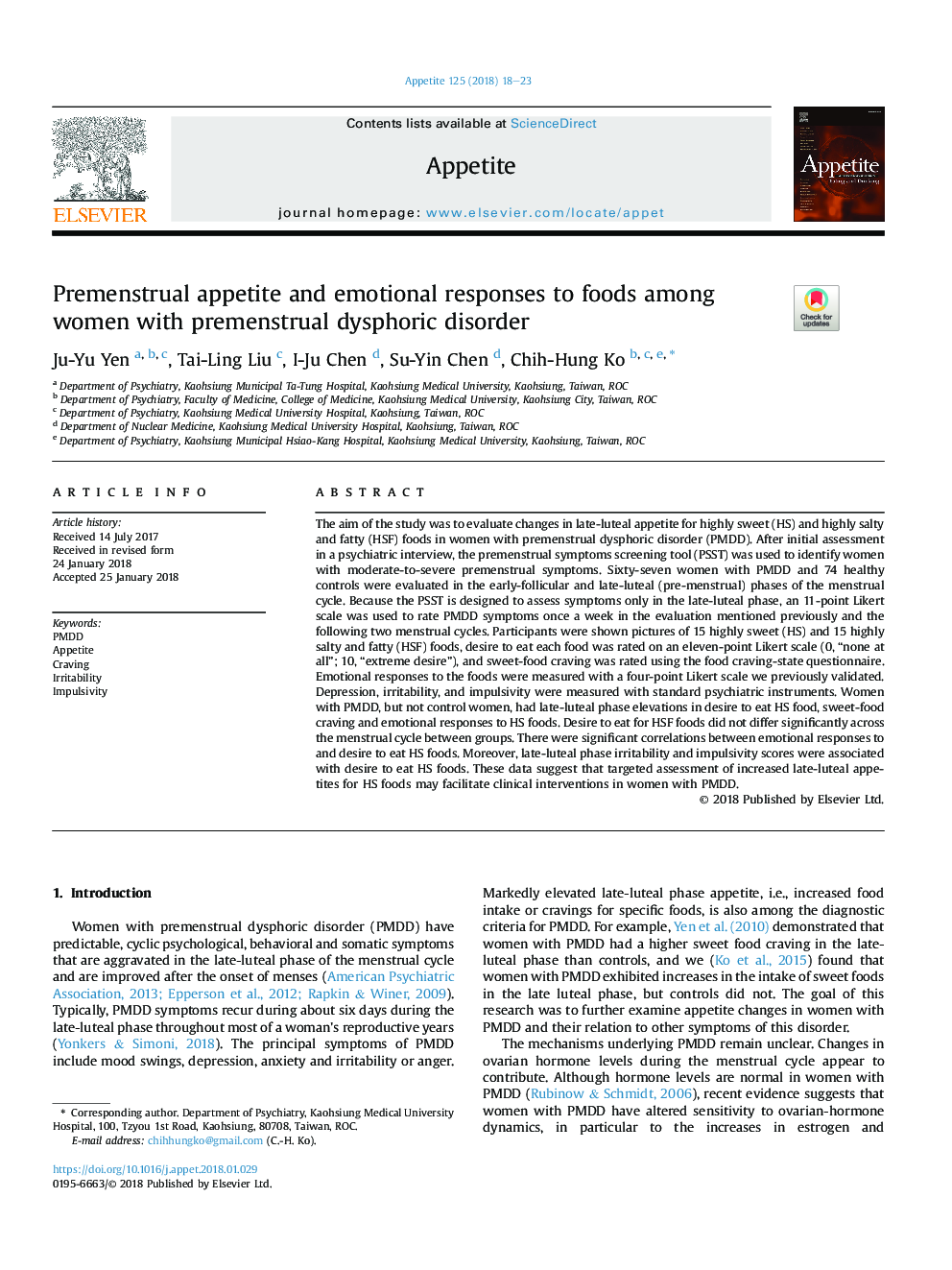| Article ID | Journal | Published Year | Pages | File Type |
|---|---|---|---|---|
| 7305676 | Appetite | 2018 | 6 Pages |
Abstract
The aim of the study was to evaluate changes in late-luteal appetite for highly sweet (HS) and highly salty and fatty (HSF) foods in women with premenstrual dysphoric disorder (PMDD). After initial assessment in a psychiatric interview, the premenstrual symptoms screening tool (PSST) was used to identify women with moderate-to-severe premenstrual symptoms. Sixty-seven women with PMDD and 74 healthy controls were evaluated in the early-follicular and late-luteal (pre-menstrual) phases of the menstrual cycle. Because the PSST is designed to assess symptoms only in the late-luteal phase, an 11-point Likert scale was used to rate PMDD symptoms once a week in the evaluation mentioned previously and the following two menstrual cycles. Participants were shown pictures of 15 highly sweet (HS) and 15 highly salty and fatty (HSF) foods, desire to eat each food was rated on an eleven-point Likert scale (0, “none at all”; 10, “extreme desire”), and sweet-food craving was rated using the food craving-state questionnaire. Emotional responses to the foods were measured with a four-point Likert scale we previously validated. Depression, irritability, and impulsivity were measured with standard psychiatric instruments. Women with PMDD, but not control women, had late-luteal phase elevations in desire to eat HS food, sweet-food craving and emotional responses to HS foods. Desire to eat for HSF foods did not differ significantly across the menstrual cycle between groups. There were significant correlations between emotional responses to and desire to eat HS foods. Moreover, late-luteal phase irritability and impulsivity scores were associated with desire to eat HS foods. These data suggest that targeted assessment of increased late-luteal appetites for HS foods may facilitate clinical interventions in women with PMDD.
Related Topics
Life Sciences
Agricultural and Biological Sciences
Food Science
Authors
Ju-Yu Yen, Tai-Ling Liu, I-Ju Chen, Su-Yin Chen, Chih-Hung Ko,
